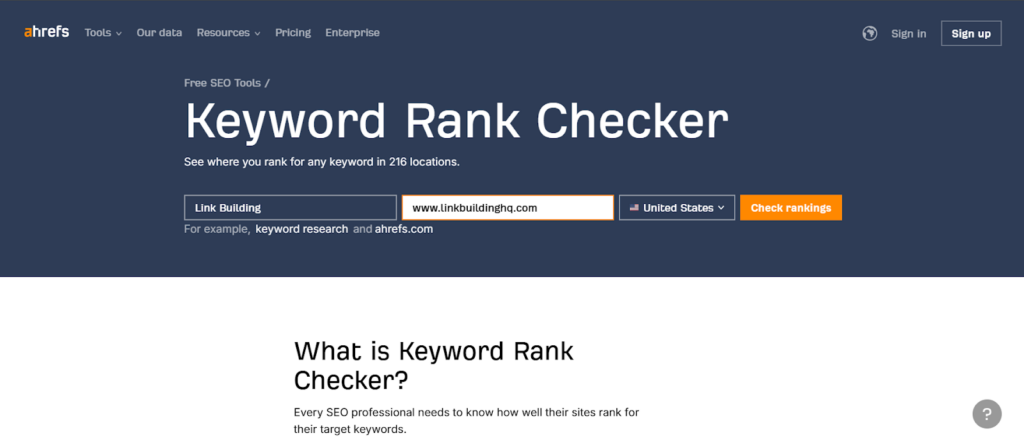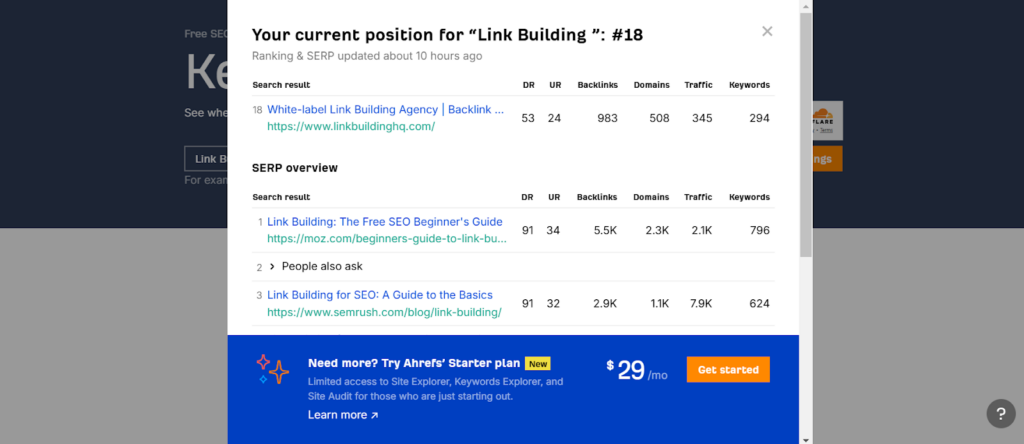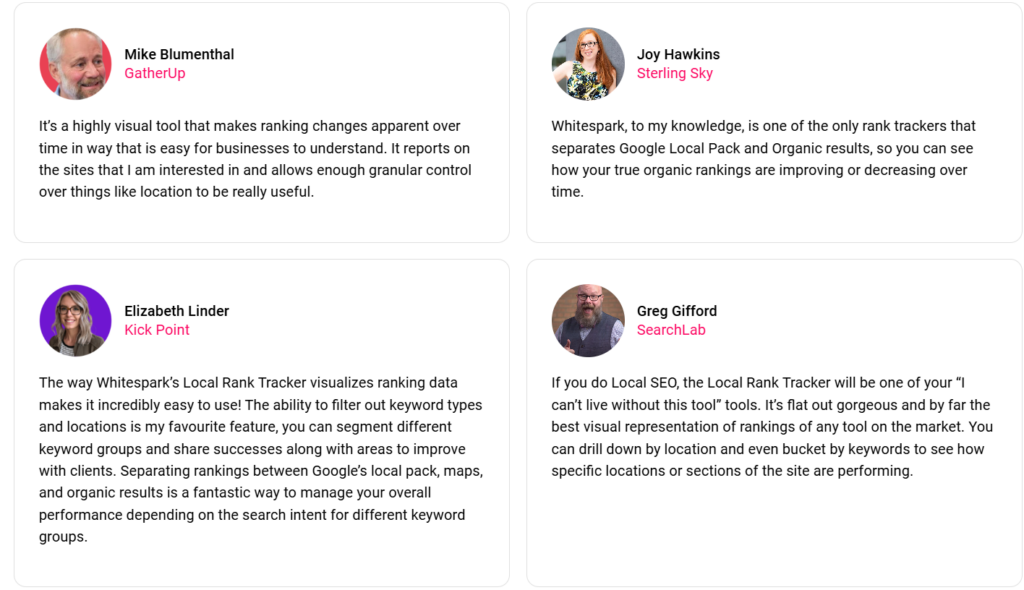3 Effective Ways to Find Out Where Your Website Ranks on Google
Introduction
Finding out where your Website Ranks on Google can be quite hectic. Anyone running a website knows that Google rankings are imperative for consistent traffic.
So, let’s discuss 3 effective ways that could help you learn about your website’s rankings on Google.
-
Check Where Your Website Ranks via Google Search Console
One of the best ways to find how your pages are ranking based on different keywords is to scour through your Google Search Console. Here are the steps you can follow to check how your website’s pages rank on Google.
Steps to Check Rankings via Search Console
Step 1: Log in to Google Search Console
Once you have the search console opened, navigate on the left ribbon until you find “Performance”. Right underneath you’ll see Search Results.
Step 2: Check Average Positions
See those line graphs on the page? Click on “Average Positions,” and then click on the pages option below.
Step 3: Scroll, Find, and Click
You’ll see a list of pages of your website. You can virtually find all the pages of your website in the list. When you initially scroll through this list, you’ll see the average positions for your page. You can then click on the individual pages in the table to view which keywords they are ranking for and the corresponding position.
You can follow through this visual tutorial to better understand how to find rankings via Google Search Console
Benefits of Checking Rankings via GSC
One of the main benefits of using Google Search Console to analyze your rankings is that you directly get the average position for your web pages while also being able to observe which individual pages are doing well for certain keywords.
This can be crucial when you’re targeting specific keywords, as Google Search Console will provide you insights on which keywords your website is already ranking for.
Limitations of GSC for Rankings
One of the major drawbacks of using GSC for rankings is that you only get data based on recent history, typically based on the last 7 days. This means that you don’t have real-time data at hand about your web pages.
Moreover, if your website has a lot of pages, finding them and analyzing rankings for each page becomes more of a hassle. Also, since Google Search Console is only focused on your own website, you can’t get any data about the rankings of your competitors.
-
Manual Search on Google
Another way to check out where your website ranks is by taking the route of manual search on Google. While some might consider this a longer method, the accuracy is impeccable, since you’re capturing real-time results with each search.
Steps to Check Where Your Website Ranks on Google via Manual Search
Step 1: Open a new Incognito or Private Browsing Window
You want rankings to come fresh, rather than based on what you have been previously searching. This is what you get when you surf the web from an Incognito Window in Chrome or a Private Browsing Window in Firefox.
Step 2: Type in Your Target Keywords
Open Google and search for your target keywords. You can use multiple tabs with each tab set for a specific keyword as that will save you time in having to repeat the process on a single tab.
Step 3: Scroll through the SERPs to find your website
If your website is already ranking high for the keyword you’ve entered in the search, then you should find it in the top 10. However, in case your keyword is not on the first page, you can use the “CTRL+F” and type your domain name to see if your web page pops up in the SERPs.
Benefits of Using Manual Search
One of the main benefits you get from using manual search to check rankings is that you get real-time data. If your website’s focus is in the same region as your own presence, then you’ll get even more accurate data from the keywords you search with.
Also, you have the option to check who else is ranking based on your target keywords. If you find bigger competitors with multiple pages for your target keyword, you can shift strategies accordingly and work on more achievable keywords for your SEO.
Limitations of Using Manual Search to Check Rankings
One of the major reasons why SEOs often feel annoyed at using manual search to check for rankings is the amount of time and effort required for it. Scrolling through multiple pages for an hour (or much more, depending on the number of pages to check) can feel extremely monotonous.
Also, with a manual search, the results you get will be focused solely based on your location. This means that you won’t be able to observe the global results or any other region’s results other than your own.
While the option of having multiple tabs to check different keywords is an option, tracking all the tabs can become quite a hassle. For example, if you want to track hundreds of keywords, then a manual search will only crash your browser instead of providing insights.
-
Leveraging Rank Tracking Tools
When looking for rankings, one of the best methods is to have a professional SEO tool by your side. Of course, the functionality of most paid tools normally surpasses the ones available for free. Getting a comprehensive SEO tool like Ahrefs can make your rank tracking a breeze along with a plethora of features to help optimize for SERPs.
However, if you’re on a tight budget, we would recommend going with the Free Keyword Rank Checker by Ahrefs. The tool is quite intuitive and user-friendly, hence our recommendation.
Steps to Where Your Website Ranks via Ahrefs Free Keyword Rank Checker
Step 1: Open the Keyword Rank Checker
Simply click the link, and you will be redirected to the free tool on a new tab.
Step 2: Enter the Target Keyword and URL
Enter a target keyword in the first text field and the page or URL for which you want to check the ranking in the second text field.
Step 3: Select the Location
Ahrefs allows you to select from 216 different locations, which is great if you’re looking to focus on Local SEO. Once you’ve made your choice, simply click the button “Check Rankings,” and you’ll see a dialogue box for a few minutes until the results load up.
A screen like the one below should give you the final result.
Benefits of Using Ahrefs Free Rank Checker
The first benefit of making use of Ahrefs Free Rank Checker is that you can easily check the position of different URLs to each keyword. This means that you can actively check which of your competitors are working on the same keyword as you, which will help get insight on how to alter your SEO Strategy.
With the option to choose from multiple locations, you can see how well your web pages are faring in different geographic locations based on your target keywords, which can immensely power up your location-based strategies.
Limitations of Ahrefs Free Rank Checker
One of the main limitations of using this tool is that it does not keep your data or search history. This means that you will have to manually keep a record of your positions based on keywords and locations.
While setting up an Excel sheet for all this information should be easy initially, it might become hectic as the number of pages for your website, or amount of target keywords increases. Moreover, as a free tool, the functionality you get is limited. In comparison the paid comprehensive version allows for many more types of explorations, ensuring better insights.
Bonus Tip: A Local Search Tracking Tool for Location-Based Rankings
If you are thinking about getting a paid tool just to check where your website ranks on Google, then it is better to go with a tool that provides local rank tracking as well. This would allow you to get highly specific results based on location.
Tools for Local Search and Rank Tracking
The two popular choices in this scenario would be BrightLocal and Whitespark. Of course, there are many more available online that can provide you with multiple features. However, in our opinion and that of Greg Gifford and Joy Hawkins, Whitespark is a clear winner when it comes to picking the right local SEO tool, as evident from their review section.
Benefits of using Local SEO Tools
The first benefit is one we have already talked about earlier, where you can get location-based rankings. However, your local SEO tool should offer more than that. Features like Reputation Builder and Local Platform help optimize how your GMB profile and business look online .
With the option of Whitespark’s online live demo, you can easily check what insights can be gathered from the tool itself to efficiently gauge its usability.
Limitations of Using Local SEO Tools
Local SEO tools, as the term dictates, are only focused on locality. This means that they are not suitable for generalized or non-localized keywords. In other words, by focusing solely on local SEO, there is a high chance that your website might start to miss out on global rankings.
Another negative aspect of going with local SEO tools is cost. Even if minimal, there is certainly an added cost for a paid tool. Since most of these tools work on a subscription, a concurrent cost increase would be inevitable.
Conclusion
Checking your rankings is a mandatory even if you’re just starting on SEO efforts. However, finding the right style can make all the difference for your future strategies. We hope these methods and their limitations help you make the right choice. To learn more about SEO and its intricacies don’t forget to bookmark our blog.









